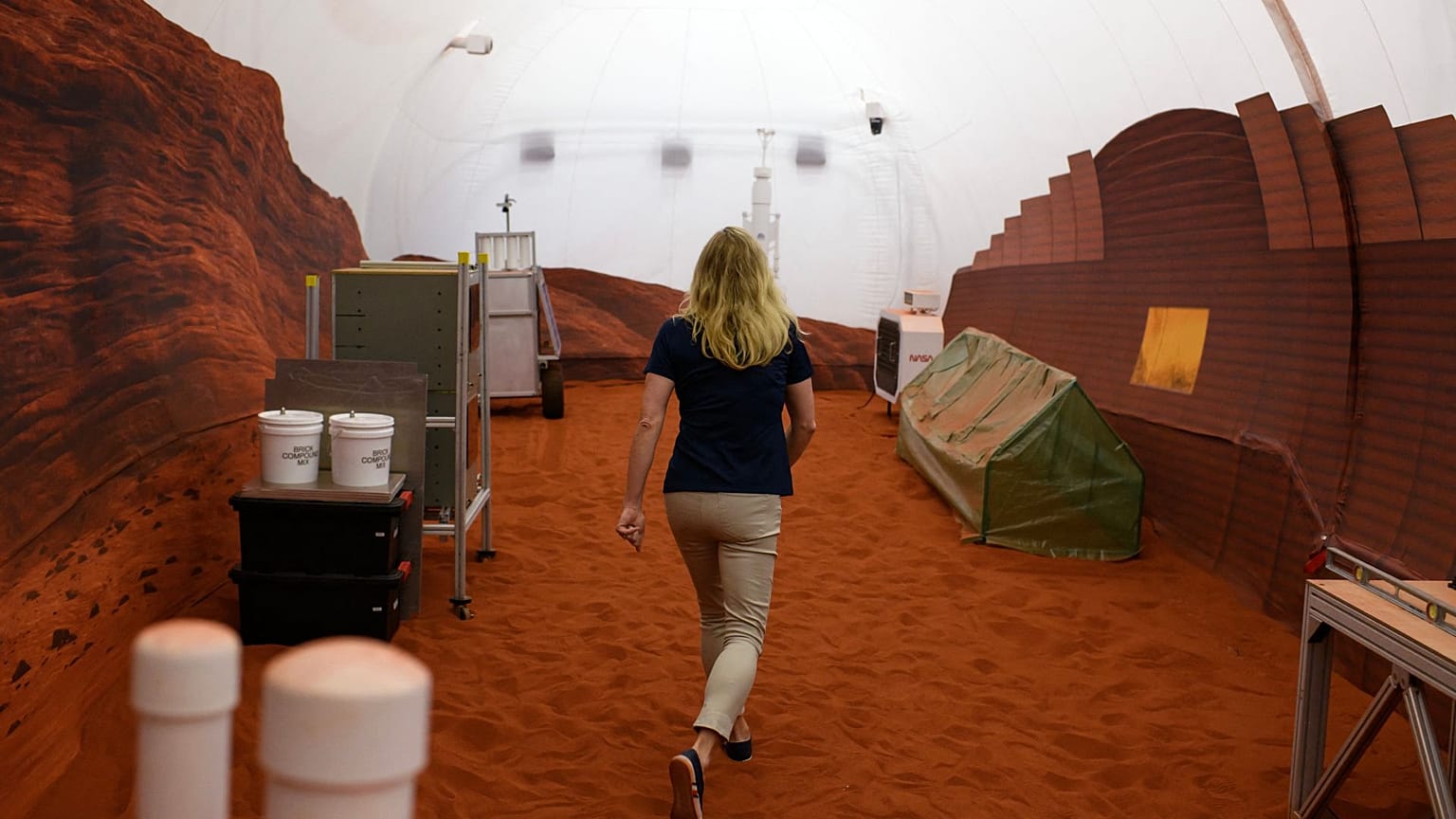A four-person crew will spend a year inside NASA’s Mars simulation habitat to test how they react to conditions on the Red Planet.
In the near term, the big priority for NASA is getting humans back on the surface of the Moon via the Artemis III mission planned for 2025.
But that doesn’t mean the space agency has taken its eye off the bigger target: landing the first humans on the surface of Mars.
And while it’s unlikely a manned mission to Mars will materialise before the 2030s or early 2040s, preparations back on Earth are already very much underway.
On Tuesday, NASA unveiled its new 3D-printed Mars-simulation habitat, Mars Dune Alpha, where "astronaut-like" volunteers will spend a full year testing what life will be like on future missions to the Red Planet.
The first Crew Health and Performance Exploration Analog (CHAPEA) trial is scheduled to commence at the habitat in Texas, the US, this summer with a four-person crew.
“They will be in isolation and confinement for that year and they will be conducting activities similar to what we would expect them to conduct on the Mars surface," Grace Douglas, lead researcher on the CHAPEA experiments, explained.
Throughout the trial, NASA experts will analyse their performance and monitor their mental physical health to assess humans’ ability to withstand the resource-scarce conditions of the Martian environment.
Inside 'Mars Dune Alpha'
The accommodations inside the 160-square-metre structure include two bathrooms, a gym, a vertical farm, work areas, a medical station, and an area for relaxing.
An airlock leads to an "outdoor" reconstruction of the Martian environment - though it is still located inside the hangar that houses the habitat.
Several pieces of equipment that astronauts would likely use are scattered around the red sand-covered floor, including a weather station, a brick-making machine and a small greenhouse.
Data from the trial will help NASA better understand astronauts’ resource use on Mars, says Douglas.
"We can really start to understand how we're supporting them with what we're providing them, and that's going to be really important information to making those critical resource decisions," she told journalists on a tour of the habitat.
The habitat also features a treadmill where the volunteers will walk suspended from straps to simulate the reduced gravity on Mars.
"We really can't have them just walking around in circles for six hours," joked Suzanne Bell, head of NASA's Behavioral Health and Performance Laboratory.
Four volunteers will use the treadmill to simulate long trips outside to collect samples, gathering data or building infrastructure, she said.
The members of the first experiment team have yet to be named, but the agency stated that selection "will follow standard NASA criteria for astronaut candidate applicants," with a heavy emphasis on backgrounds in science, technology, engineering and maths.
Researchers will regularly test the crew's response to stressful situations, such as restricting water availability or equipment failures.
The Mars Sample Return mission
Meanwhile, at the agency’s Jet Propulsion Laboratory in Pasadena, California, preparations for another Mars mission to collect and return samples to Earth are underway.
NASA plans to launch an orbiter and a lander in 2027 and 2028, respectively with the samples’ return to Earth earmarked for 2033.
All beingwell, the samples will return in a capsule currently being designed that will crash back to Earth.
The challenge, then, is to ensure the capsule finds a soft landing and the samples remain intact.
"We put that [capsule] inside of another shell and inside of another shell after that, and the whole thing comes back to the earth," Richard Cook, the programme director of Mars Sample Return, explained.
"So, it's those repeated shells that we put around it that we're really testing to make sure that it doesn't come open when it lands. And it's all really about making sure that the samples are fully contained and don't open up".
For more on this story, watch the video in the media player above.


















